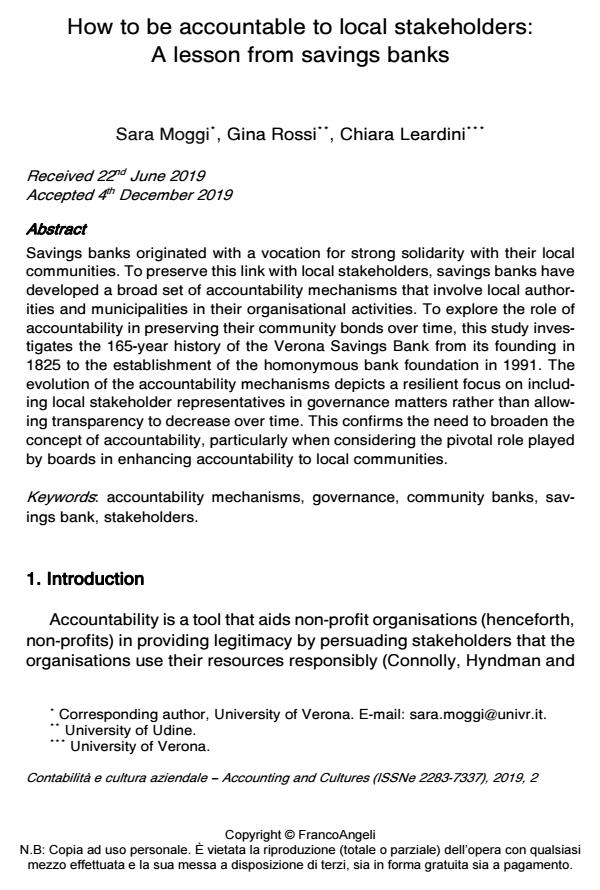How to be accountable to local stakeholders: A lesson from savings banks
Journal title CONTABILITÀ E CULTURA AZIENDALE
Author/s Sara Moggi, Gina Rossi, Chiara Leardini
Publishing Year 2020 Issue 2019/2
Language English Pages 33 P. 35-67 File size 325 KB
DOI 10.3280/CCA2019-002003
DOI is like a bar code for intellectual property: to have more infomation
click here
Below, you can see the article first page
If you want to buy this article in PDF format, you can do it, following the instructions to buy download credits

FrancoAngeli is member of Publishers International Linking Association, Inc (PILA), a not-for-profit association which run the CrossRef service enabling links to and from online scholarly content.
Savings banks originated with a vocation for strong solidarity with their local communities. To preserve this link with local stakeholders, savings banks have developed a broad set of accountability mechanisms that involve local authorities and municipalities in their organisational activities. To explore the role of accountability in preserving their community bonds over time, this study investigates the 165-year history of the Verona Savings Bank from its founding in 1825 to the establishment of the homonymous bank foundation in 1991. The evolution of the accountability mechanisms depicts a resilient focus on including local stakeholder representatives in governance matters rather than allowing transparency to decrease over time. This confirms the need to broaden the concept of accountability, particularly when considering the pivotal role played by boards in enhancing accountability to local communities.
Keywords: Accountability mechanisms, governance, community banks, savings bank, stakeholders.
Sara Moggi, Gina Rossi, Chiara Leardini, How to be accountable to local stakeholders: A lesson from savings banks in "CONTABILITÀ E CULTURA AZIENDALE" 2/2019, pp 35-67, DOI: 10.3280/CCA2019-002003